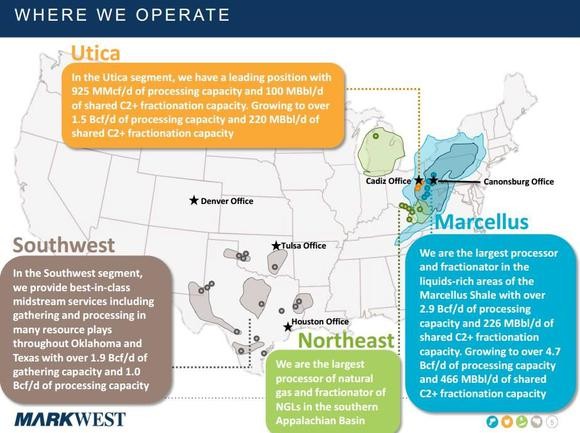Why Investors Should be Buying Energy Assets
Post on: 30 Август, 2015 No Comment

Posted on Mon, 15 October 2012 17:26 | 1
A 10x (10 times) oil price increase and 4 mb/d (million barrel per day) demand spike followed the 1973 Oil Embargo. Similar price and demand spikes seem likely to follow an oil supply shock between this summer and 2015.
There is an investment advantage in knowing:
10x productivity gains are practical transports to increase economic work per unit energy via railroads and Personal Rapid Transit (PRT, disclosure: The author is the founder of JPods, Inc. a PRT industry company that is discussed later in this article).
A gasoline supply shock is likely this summer, nearly certain by 2015.
Both demand and prices spiked after the Oil Embargo. A repeat seems likely after the next oil shock.
Life requires energy. People pay for essential energy first and at whatever price is required. Conventional Supply/Demand does not apply to what is perceived as essential energy; something else in the economy breaks. As gas prices increased from $1.03 in 1998 to $3.30 in 2008, mortgage payments were diverted to gasoline purchases, foreclosures increased and banks collapsed. Fraud, greed and bad government policy amplified the scale.
Net Energy defines an energy resource’s commercial potential, useful energy relative to energy required to get that energy to market. A resource’s value falls off an energy cliff at values below 10:1 as the usefulness is consumed by processing energy.
Jump in Capacity, Demand and Price
Following the 1973 Oil Embargo there was a 10x oil price jump; prices not seen since the late 1800s.
Conventional logic expects a 10x price increase to suppress demand. However, after the Embargo there was a 4 mb/d demand increase (green circle).
The coming gasoline outage will awaken people to the facts:
US Peak Oil was in 1970.
Americans should expect a 10 mb/d reduction in foreign oil between today and 2015 from some combination of debt collapse, politics and world Peak Oil (2005).
Oil is finite. Natural gas fracking, oil sands and tight oil might increase production for a while, but those sources will also deplete. The last of the affordable fossil fuels are needed to support the 4 mb/d demand spike re-tooling requires.
It does not matter how much oil there is, it matters how much is affordable.
Americans face Oil Famine: a monolithic dependence on a source of energy 60% outside our control.
Buy Energy Assets based on Net Energy
For the next 5-20 years, energy assets with Net Energy of at least 10:1 have a 10x upside potential.
Conventional coal, crude oil and natural gas stocks seem likely to see huge advances. Of these, I believe natural gas will do best as it is most easily applied to re-tooling transportation. In the race to re-tool, these resources may deplete even faster than they have for the last 40 years. Cars and trucks being converted to natural gas will also accelerate demand, price and depletion. Unlike the import spike after the Embargo, because of debt and world Peak Oil (2005), the 4 mb/d demand spike to re-tool will have to come from US domestic sources.
I do not invest in natural gas so here is a primer on natural gas ETFs (Exchange Traded Funds). Of these S&P Oil and Gas Exploration & Production (XOP) and First Trust ISE-Revere Natural Gas Index Fund (FCG) are more centered on production and assets in the US.
Solar and wind companies with Net Energy great than 10:1, established manufacturing capacities and secure raw materials should jump in value. I have had meetings at SunPower (SPWR) and SunTech (STP) relative to using their panels in an effort to re-tool transportation. Seek Alpha article on undervalued solar manufacturers identifies these companies: Yingli Green Energy (YGE), Trina Solar (TSL), LDK Solar (LDK), ReneSola, Ltd. (SOL), JA Solar Company, Ltd. (JASO), Jinkosolar Holding Co. Ltd. (JKS), First Solar (FSLR).
Transportation: the Catalyst for Changing Energy Systems
A 2-10 mb/d decrease access to will shatter the current auto industry and government highway policies. Re-tooling transportation seems likely to be some combination of railroad expansion, bicycles, ultra-light cars and Personal Rapid Transit (PRT).
Shorting car companies Ford (F) and General Motors (GM) may make sense. My guess is bicycle and small engine companies, such as Briggs and Stratton (BGG), Arctic Cat (ACAT) and Toro (TTC) will make 100 mpg, ultra-light bicycle-cars similar to those of the early 1900s.
In the late 1800s railroads were the catalyst for changing energy systems from biofuels (hay and wood) to fossil fuels (see cost graph at top of this article). Railroads created stable demand that allowed the fossil extraction industries to scale, cut costs by 10x and commercialize use into other markets.
Freight rail averages 480 ton-miles per gallon. As access to oil energy decreases, some of the thousands of miles of railroads abandoned as government subsidized highways/oil will likely be rebuilt; profits and markets for railroads should expand again. I do not know much about investing in railroads so here is a link to The Street’s rating of railroad stocks and symbols for B rated and above: Union Pacific (UNP), Canadian National (CNI), Norfolk Southern (NSC), Kansas City Southern (KSU), Genesee & Wyoming (GWR), CSX (CSX), Canadian Pacific (CP).
Personal Rapid Transit (PRT or PodCars) was identified as the solution to the 1973 Oil Embargo in Congressional Office of Technology Assessment study PB-244854 (1975). The PRT network built in Morgantown, WV has delivered 110 million oil-free, injury-free passenger-miles since opening in 1975. PRT networks are essentially the integration of computer networks with ultra-light, robotic railroads to create a physical version of the Internet; podcars with the capacity of automobiles move people and cargo in cities with 10x energy savings. Link to a presentation on PRT at Duke University for the Council on Competitiveness .
Kiva Systems recently demonstrated the investment value of robotic networks moving physical packets. Kiva moves goods in warehouses the way PRT moves people and cargo in cities. Bain Capital’s $33 million investment resulted in a recent sale of Kiva to Amazon (AMZN) for $775 million.
Investing in PRT industry is like investing in the Internet of 1983, most companies are privately held. There is currently no US market for transportation innovation; the market is controlled by government monopoly. POSCO (PKX) has invested in the network at Uppsala Sweden. British Airport Authority BAA invested in ULTraPRT. Masdar, Abu Dhabi has 2getthere and ULTraPRT. ET3 is designed for transport between cities. JPods and ET3 have signed agreements to build in China.
As PRT networks deploy many will install solar and wind collectors over the rails to gather 5,000 to 30,000 vehicle-miles of power per mile of rail per day (image of system designed by Swenson Solar for over JPods rails).
My guess is a 100 million bicycle-cars/scooters and half a million miles of PRT networks are required to compensate for a loss of 10 mb/d of imported oil. Deploying solar collectors 4 to 6 meters wide over PRT networks will be the catalyst for changing energy systems from fossil to solar. There are about 140,000 miles of freight railroads in the US, logistical arteries for an energy constrained world. The US will require about 500,000 miles of systems like solar-powered JPods to be the logistical capillaries. The US market for transportation solar is about 500 GigaWatts or about 7 times the 67 GigaWatts of solar installed in the world as of 2011. The world market for solar powered transportation exceeds 2 TerraWatts.
Natural gas and grid electricity seem essential to supplying the 4 mb/d burst of energy required to power this re-tooling. The re-tooling must be well underway before the loss of 10 mb/d of imported oil.
Gasoline Supply Shock Timing:
Inventory shortage: Blue spikes into red (left) are the Sept 2008 shortage experienced in the Southeast (forecast from July 2008). Red line indicates current inventory depletions could break below the 5-yr Range, into the area were outages become ever more likely. Days of Supply graph (right) indicates gasoline production is not keeping pace with consumption relative to last year.

Data is from the TWIP report. published each Wednesday. WARNING: The TWIP Report is written from an accounting point of view; about 180 million barrels of gasoline or 22 days of supply are required to fill pipelines, ships, trucks and tanks. In the summer months, there is a day or two of spare operational inventory. Graphs modified to show risk.
Driver-fear shortage: If drivers fear an outage and shift from mostly empty to mostly full tanks, they will pull 1-3 days (15 to 60 million barrels) out of inventory precipitating an outage.
Refinery shortage: EU debt issues are impacting the EU refineries that supply significant gasoline to the East Coast as indicated by the bankruptcy filing of PetroPlus. Refinery closing (Virgin Islands ), politics and hurricanes add to the extreme fragility of the oil supply especially on the US East Coast.
Note: The petroleum industry is a marvel of just-in-time efficiency, with very little just-in-case inventory. Perhaps they can avoid an outage, but if these trends continue, at a minimum a jump in gasoline prices should be expected to suppress consumption. This provides a short term investment in Gasoline Futures (NYMEX: RBOB).
Massive permanent political shortages: Iran, Mexico, al-Qaeda and a number of other political entities have threatened and/or have the political risk/capacity to collapse to world’s oil supply chain on any given day. NCBC comments from T. Boone Pickens and Jim Rogers from June 13.
Massive permanent geological/financial shortages: Joint Forces Command, Joint Operating Environment 2010 :
By 2012, surplus oil production capacity could entirely disappear, and as early as 2015, the shortfall in output could reach nearly 10 million barrels per day.
A severe energy crunch is inevitable without a massive expansion of production and refining capacity. One should not forget that the Great Depression spawned a number of totalitarian regimes that sought economic prosperity for their nations by ruthless conquest.
The discovery rate for new petroleum and gas fields over the past two decades (with the possible exception of Brazil) provides little reason for optimism that future efforts will find major new fields.
Similar warning from Matt Simmons and graph (modified with arrows) from International Energy Agency’s annual energy outlook. Oil to meet demand depends on fields yet to be found.
There are considerable investment opportunities in energy:
Short-term gasoline futures seem highly likely to increase despite low oil prices. Short term gasoline supply shocks seem extremely likely.
After an oil supply shock, energy prices should be expected to increase as they did after the 1973 Oil Embargo. Demand should also be expected to spike about 4 mb/d for 5 to 10 years to power the re-tooling of transportation.
Preparing for a 10 mb/d shortfall by 2015 is prudent.
Government highway monopoly and bias towards automobile companies will be disrupted by oil supply shocks; restoring a free market will result in rapid deployment of transport innovations.
10x productivity gains are practical from railroads and PRT.
Extra energy of about 4 mb/d is required for about 5-10 years to implement productivity gains.
Disclosure: I have no positions in any stocks mentioned, and no plans to initiate any positions within the next 72 hours.
Additional disclosure: The author is the founder of JPods, Inc. a PRT industry company that is discussed later in this article.














